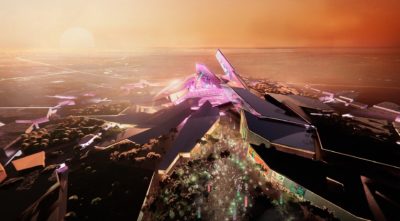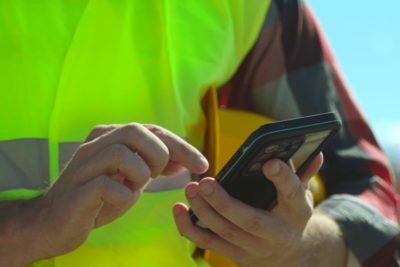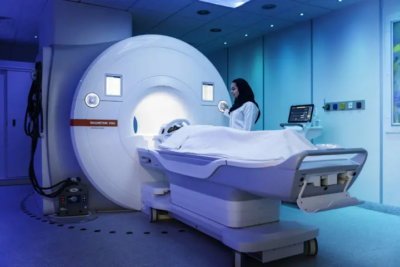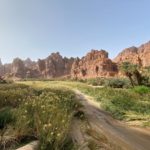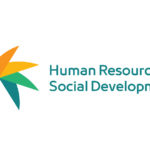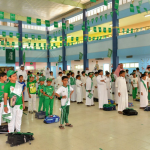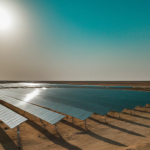
“Most of our guests are Saudis or residents in Saudi Arabia… So we have adapted our product from a 100% European offer to a mix with Saudi and Gulf style.”
-Mohammed Abdulfattah, events manager at MSC Bellisima, discussing MSC’s Red Sea cruises launched in July. [Reuters]

“Business travel will go back slower. Will it go back to pre-pandemic levels? I don’t think so. I think we will lose 20 percent of that forever.”
-Dirk Bakker, head of EMEA Hotels & CEO Netherlands, Colliers. [Hotelier]

“They perceive renewable energies as a way of killing three birds with one stone: protect the environment, boost innovation, and decrease unemployment.”
–Omar Al-Ubaydli examines the motivations of GCC states to develop their renewable energy capabilities. [Valdai Discussion Club]

“The peak in residential mortgages seems to correlate with demand for real estate advisory services this year, exceeding pre-pandemic levels seen in 2018 and 2019. We are beginning to see increased appetite from private sector real estate developers in the form of public-private-partnership initiatives with large scale government led projects.”
-Harmen de Jong, partner, real estate strategy and consulting at Knight Frank Saudi Arabia. [Knight Frank]

“I think it’s a recognition of the fact that if you want to go to the Red Sea today, you don’t have a lot of alternatives. We are opening not only a physically stunning part of the world and a stunning part of the Saudi coast to guests and visitors from Saudi Arabia, the GCC and beyond, but we’re the first that’s going to open that entire coast.”
–Nick King, CDO, The Red Sea Development Company, in comments to Arabian Business. King said that phase one of the world’s most ambitious regenerative tourism project is switching “from being very design heavy, into delivery heavy, into execution.” [Arabian Business]

“[T]here are 36 Saudi foreign business councils that work under the supervision and follow-up of the General Authority for Foreign Trade and under the umbrella of the Federation of Saudi Chambers with the aim of developing economic relations between the Kingdom and friendly countries.”
–The Saudi Gazette, discussing how Lubna Olayan, the prominent Saudi business leader and senior executive, has been named chairperson of the Board and Executive Committee of the Saudi-Swedish Business Council; the first Saudi women to head a business council. [Saudi Gazette]

“A large number of foreign workers in retail and office administration activities left Saudi Arabia abruptly as a result of the pandemic and suddenly thousands of job vacancies became available. These jobs did not pay high enough salaries to attract educated Saudi men but many women (especially lower-class, non-university educated women) found the salary feasible. One interviewee describes seeing women work at supermarkets as a standard and common practice when it had not been so before. In a short span of time, a large number of Saudi women filled these vacancies.”
-Lydia Begag and Nader Habibi assess the impact of Saudi Arabia’s gender inequality reforms over the last five years. [International Policy Digest]

“Had these reforms been more forceful, such as banning the niqab or enforcing liberal dress freedom for women, they could have produced a negative cultural backlash. Instead, the moderate liberalization of the dress code and the gender-mixing reforms were introduced as optional freedoms which became available in parallel with the existing conservative norms rather than replacing them.”
–Lydia Begag and Nader Habibi take a close look at the many reforms introduced in Saudi Arabia to reduce gender inequality and concluded that, to date, they have created real change without sparking disruptive cultural backlash. [International Policy Digest]

“We can now link the Camel Site to a period in prehistory when the pastoral populations of northern Arabia created rock art and built large stone structures called mustatil. The Camel Site is therefore part of a wider pattern of activity where groups frequently came together to establish and mark symbolic places.”
–Researchers from the Saudi Ministry of Culture, the Max Planck Institute for the Science of Human History, the CNRS, and King Saud University in a paper that says life-size camel sculptures in Saudi Arabia that were originally thought to be 2,000 years old actually date back 8,000 years, when the now arid deserts of northern Saudi Arabia were “a savannah-like grassland scattered with lakes and trees.” [Daily Mail]

“We go where the money is and where the deals are. We have a lot of faith in Saudi.”
-Mohammed Alhassan, Gulf Islamic Investments (GII) co-founder, who is planning to invest $600 million in a Saudi health-care company. GII is planning to invest $1 billion into the kingdom over the next year to 18 months and is expected to target logistics and cloud kitchens. [Bloomberg]
